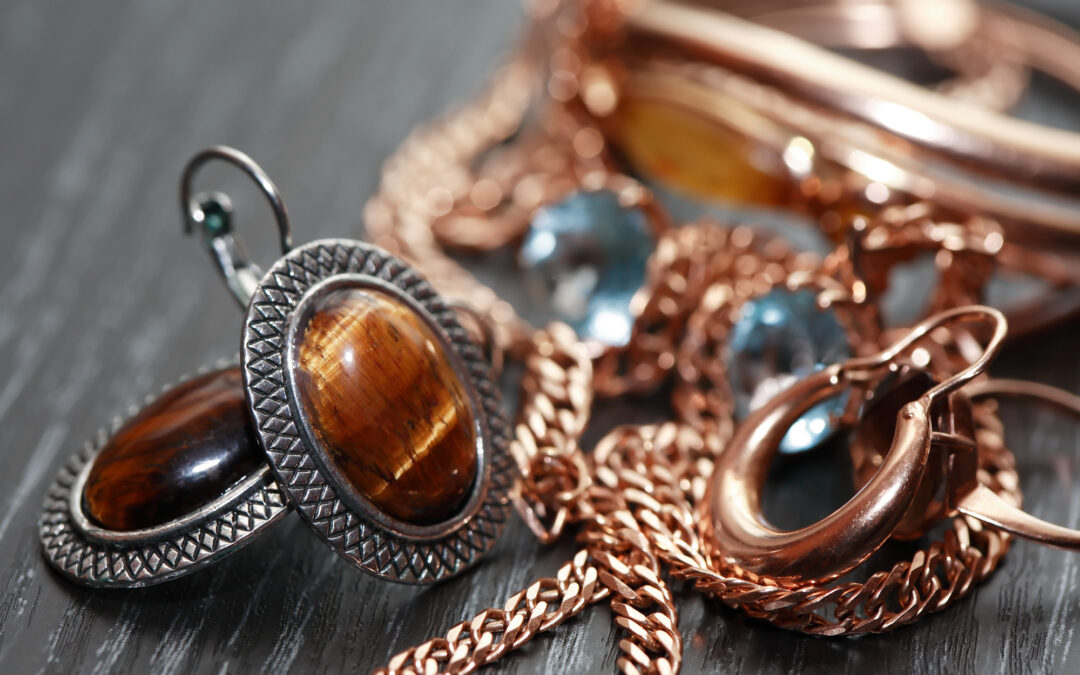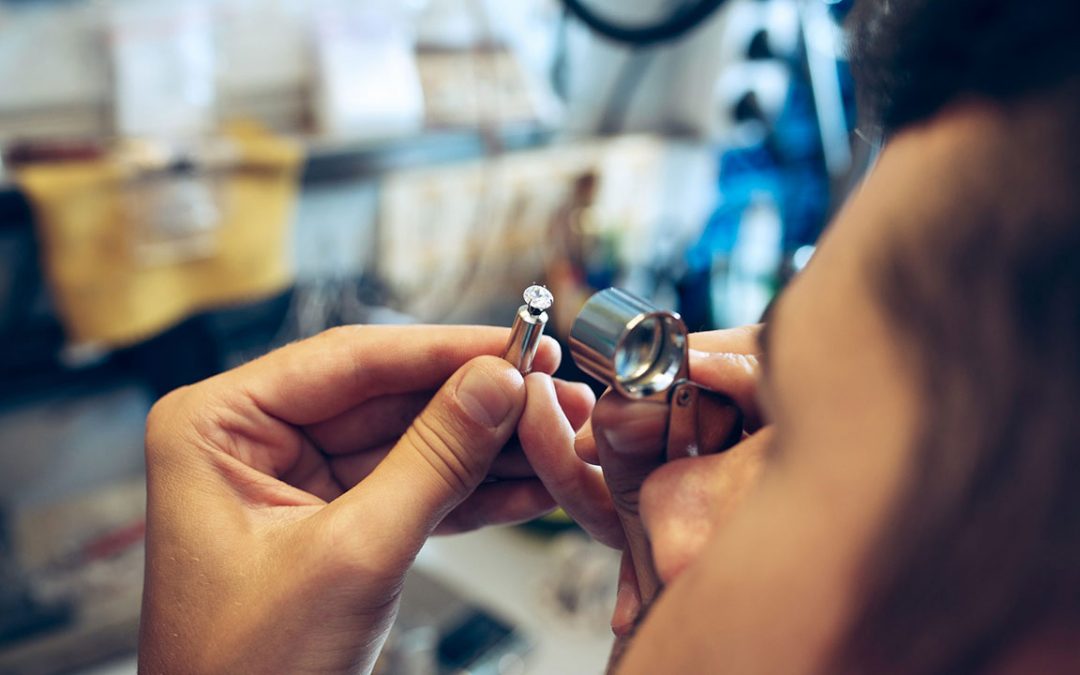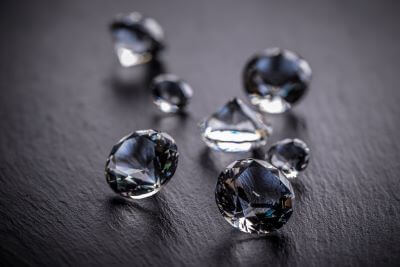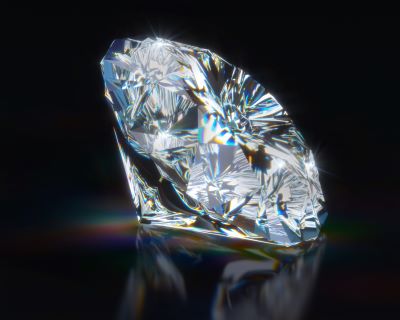
by FAO Jewelers | Mar 27, 2023 | Jewelry 101
7 Tips for Selling Vintage Jewelry
Selling vintage jewelry can be quite profitable if you do it at the right place. Get several tips for selling it in this guide.
The most expensive piece of jewelry in the world was sold for $46 million. Even if your rare pieces aren’t going to sell for that king’s ransom, many of them may have real value that you don’t know about.
If you’re looking to get some extra cash, selling vintage jewelry is a great choice. Read on to learn how to choose jewelry to sell and exchange it for money.
1. Know What You’re Selling
If you’re thinking about selling antique jewelry, you likely have a pretty good idea of what pieces you have to choose from. It’s important that you select the right rare jewelry to sell from those larger batches.
First, consider which pieces in the collection have a lot of sentimental value. If something belonged to your beloved grandmother and you remember her wearing it, that’s probably not something to sell. Don’t make any decisions you’ll regret, and be careful about how you sort things out.
It’s also important that you keep collections together. If you have a matching set, including a necklace, earrings, and bangles, you’ll get more money if you sell the collection together.
If you want to keep part of it, don’t sell the rest of the collection. Doing so will drastically reduce its value, and you won’t be able to sell it later if you change your mind.
2. Strip Off Sentimental Value
Once you know what pieces you want to sell and put them together, you need to assess them objectively. The jewelry to sell won’t be emotionally precious, so it should be pretty easy to strip off any remaining sentimental value. When you do this, you’ll have an easier time assessing their objective merit.
Maintaining a strong emotional attachment to the item might make you think it’s worth more than it is. It might also make you question any transaction that does not match your perceived value. This can cause a lot of issues when your perceived value is much higher than the piece’s actual cost.
You can also look at aesthetics more objectively when you’re not biased and emotional. Look through fashion blogs and websites to see what antique jewelry is currently in style. Decide whether you have something that others might actually want to wear.
If your jewelry is not currently trendy, you might be better off selling the gemstones or metal independently. A knowledgeable jeweler can help you determine how this process will work.
3. Consider the Item’s Condition
You also will need to consider the condition of your pieces before selling. If you have a gorgeous brooch that’s totally in vogue, you may still have trouble selling it if it’s in poor condition.
Scratches and chips will seriously damage the value of any piece of jewelry. Rust and tarnishing also will drastically decrease the amount you can sell it for. If clasps aren’t working or pieces are missing, you’re going to have trouble getting a fair amount for it, too.
4. Get an Appraisal
Now that you know exactly what to try selling, it’s time to get an appraisal. An appraisal happens when you take the jewelry to an expert and have them perform a value assessment. They will look at it closely by using professional tools and resources.
Microscopes will find blemishes in stones. The professional will see the overall quality of the stone, the style of the piece, and the date it was likely made. Professionals will be able to ensure authenticity and give you a quote for your sale.
This appraisal will contain detailed documentation of your piece that describes the gemstone information, metal quality, and designs. It will break down the price so you know where the jewelry derives its value.
5. Schedule a Professional Cleaning
In some cases where the piece is worth a lot of money, fixing something broken might be worthwhile. In many situations, it is not. Your appraisal and subsequent conversation with FAO experts will let you know what next steps to take.
If something is intact and in overall fair condition, there are worthwhile ways to increase its value. We offer jewelry inspections and cleaning services so that we can polish your gemstones and keep your metal in top shape. We have an eye for detail and tools that let us remove any grime without harming the stone.
We can help get your jewelry in good shape and increase its value. You may be able to sell it for enough that the cleaning pays for itself.
6. Find the Right Buyer
Determining where to sell jewelry can be a challenge for those who have never done so before. It’s hard to find reputable buyers online. You could wind up selling something for way less than you could get for it with a different jewelry buyer.
That’s why you must go to a professional and reputable jeweler to sell jewelry. At FAO, you can immediately consign items you don’t want anymore. Our marketing and sales team will help you sell it to an interested customer who comes into our shop.
Once the piece sells, we’ll call you back in to collect your check!
7. Ask the Right Questions
It’s important that you ask professionals the right questions before letting us consign your jewelry. Consider inquiring about the following:
- How much similar pieces have sold for
- How we plan to display and market your piece
- How you can collect your payment
- What steps we’ll take to ensure that you get the best value
You’ll be more confident in your decision to sell when you’re completely in the loop.
Sell Vintage Jewelry the Right Way
Now that you have some tips for selling vintage jewelry, it’s time to profit from your assets. FAO’s jewelers are excited to talk with you and appraise rare jewelry to ensure you can make a fair and profitable sale. Contact us to start a conversation about estate jewelry sales today.

by FAO Jewelers | Apr 25, 2022 | Jewelry 101
Whether it’s for a necklace or an engagement ring, knowing what to look for when buying a diamond is essential. The trick to buying the perfect diamond is first understanding the 4 Cs of diamonds. The 4 Cs are the 4 most important traits of a diamond and serve as the jeweler’s cheat sheet to finding the best diamonds. So, what are the 4 Cs of diamonds, who came up with them, and what do they mean?
The 4 Cs: A Crash Course
For centuries, the jewelry industry was a patchwork of different systems and standards, with no formal education for the jewelers in the trade. This endlessly confusing system allowed for rampant fraud to take place. One of the biggest problems was the total lack of training and education for jewelers. Because of this, an ambitious and charismatic jeweler named Robert Shipley had an idea.
In the 1930s, Shipley, himself a successful jeweler out of California, came up with an idea to professionalize the jewelry industry through proper education. This idea led to his creation of the Gemological Institute of America (GIA) in the early 1930s. To this day, the GIA is still the world’s foremost resource for all information, training, and certification for jewelers all over the world.
Shortly after establishing the GIA, Shipley set to work standardizing the diamond grading process. To him, the most important thing was to keep it simple. Shipley identified the 4 most important traits of a diamond: color, clarity, carat, and cut. By the end of the 1940s, the 4 Cs of diamonds were created and the jewelry industry was forever changed.
Color

When it comes to diamonds, the best color is an absence of color. Over the years, many different methods of color grading for diamonds were developed and used. So many, in fact, that many of the systems conflicted with each other. It was more and more difficult for jewelry customers to get a clear and consistent grading. That’s when the GIA and their 4 Cs of diamonds stepped in.
The GIA color grading scale goes from D-Z, and it actually rates a diamond’s colorlessness. The purest diamonds in the world have no color in them and they’re rated a D. As you go down the scale, diamonds appear more and more yellow or brown. Z-rated diamonds have a pretty distinctive yellow-brown hue to them.
You can get an excellent visual of the color grading scale right here on our site.
Fancy Color Diamonds
Not on the GIA color grading scale are what’s known as “Fancy Color Diamonds”. These are some of the rarest, most precious, and most valuable gemstones on earth. Fancy color diamonds are absolutely stunning and they come in a whole array of different colors. These natural diamonds come in vibrant hues of blue, red, green, purple, gray, black, and basically any other color you can imagine. Because fancy diamonds are so rare, they typically command a much higher price than colorless diamonds.
Clarity

The clarity of a diamond refers to the perfection of the diamond. In order to determine the clarity of a diamond, a professional gemologist needs to inspect the stone for imperfections, like inclusions and blemishes.
An inclusion refers to an imperfection within the diamond. A blemish refers to an imperfection on the outside of the diamond. Inclusions and blemishes diminish the value of a diamond because they affect both the beauty and structure of the gem.
The GIA, in their 4 Cs of diamonds, came up with a generalized, universal grading system for clarity. The scale is broken into 6 categories and 11 total grades. The variations between these different categories may seem slight, but skilled gemologists can tell the difference.
GIA Clarity Grading Scale:
FL – Flawless: No blemishes or inclusions detected at 10x magnification.
IF – Internally Flawless: No inclusions detected at 10x magnification.
VVS1 & VVS2 – Very, Very Slightly Included: Inclusions only slightly detectable by skilled graders at 10x magnification.
VS1 & VS2 – Very Slightly Included: Inclusions can be detected (with some effort) at 10x magnification.
SI1 & SI2 – Slightly Included: Inclusions detected at 10x magnification.
I1, I2, & I3 – Included: Inclusions are easily detected under 10x magnification.
Carat
The carat is the easiest of the 4 Cs to explain; it refers to the weight of the diamond. Diamonds are incredibly valuable stones, and some of that value is dependent on how big the diamond is. One metric carat is equivalent to 200 milligrams. To be as precise as possible, each carat is broken into 100 points. This allows the carat of a diamond to be precise down to the hundredth decimal point.
Cut

Finally, there’s the cut of a diamond. This member of the 4 Cs is often hailed as the most important “C”. It’s also the most difficult to rate because of its complexities. A diamond’s cut essentially rates how beautiful a diamond is based on how it interacts with light.
When people think of “diamond cut”, they’re typically thinking of the shape of the diamond instead of the cut. The best cut diamonds seem to come to life under light. They sparkle and shine in the most beautiful ways. This is achieved by, very precisely (and artfully!), cutting and shaping the diamond’s facets to perfectly bounce light across and through the diamond.
The most seasoned and skilled diamond craftsmen and women can almost make the light dance across their diamonds. This skill requires an incredible amount of patience, precision, and creativity in order to achieve the perfect cut.
The diamond cut grading scale, from the GIA, goes from Excellent to Poor.
Find the Perfect Diamond at F.A.O. Jewelers in Brighton, MI
Finding the right diamond for your piece of jewelry is easy, with a little guidance from the pros. That’s what we’re here for. The diamond experts here at F.A.O. Jewelers have years of experience finding the perfect diamonds. With a huge supply of individually sourced diamonds, we can help walk you through the 4 Cs of diamonds to ensure you get the perfect stone.
Give us a call at 810.229.5335, or stop by our location in Brighton, MI to see our engagement rings firsthand. For even more information, check out our Jewelry 101 blog or follow us on Facebook and Instagram.







